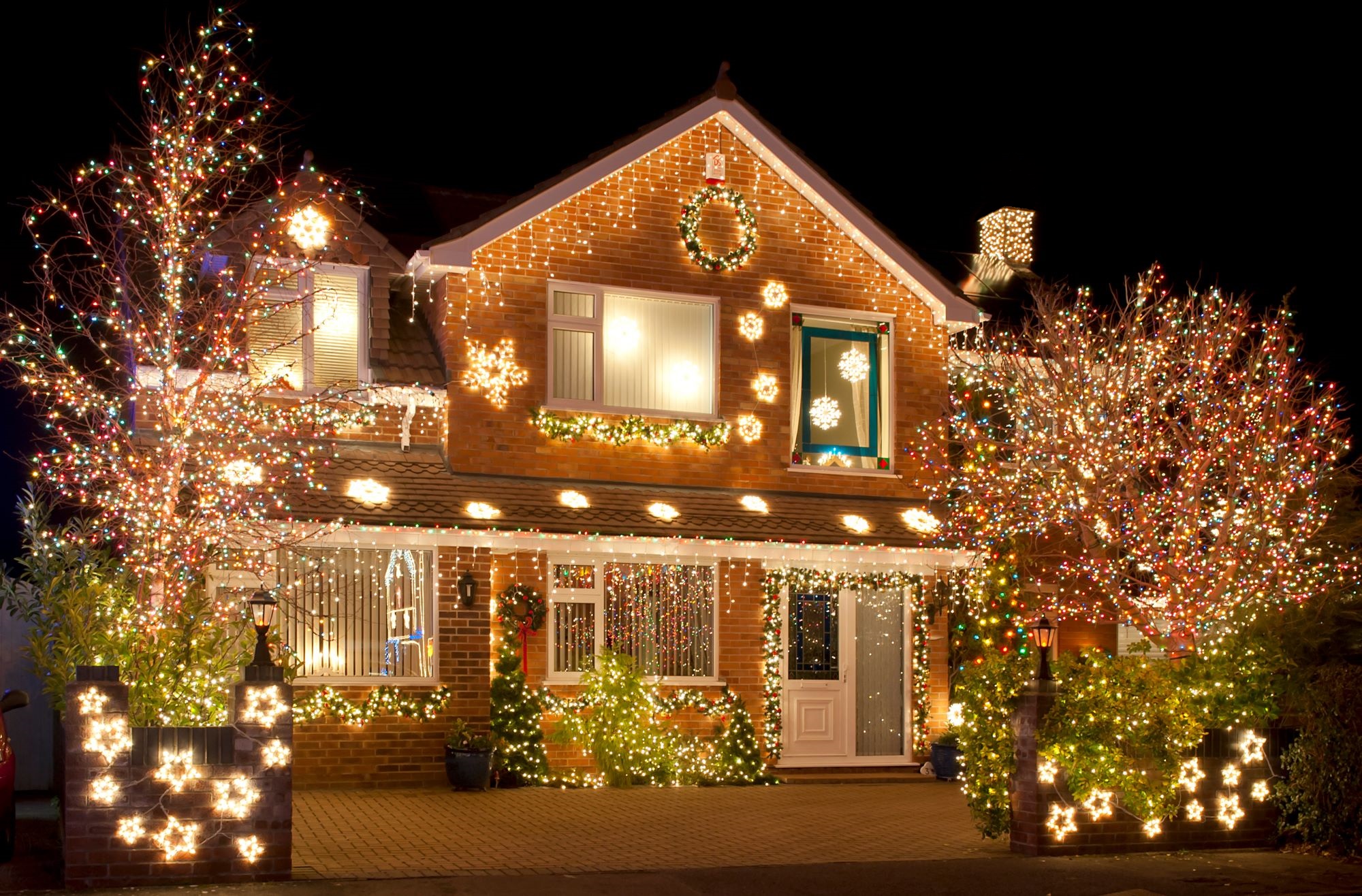Information on this page is for customers in
{{ town-name }}
Holiday Light Safety
Every year, hundreds of home fires start with decorative lighting. Learn how to avoid this danger.
Keep in mind that making your home merry and bright with electric holiday decor will increase your electricity usage and bill.
To help regulate energy use and reduce cost, consider a programmable timer or use holiday lights with LED bulbs. Read more energy saving tips.
Stay Safe for the Holidays
Whether your preference is for 25,000 imported twinkle lights or traditional candles in the window, we want to make sure your holiday illumination is safe and affordable.
According to the National Fire Protection Association, every year 790 home fires begin with holiday decorations and another 150 home fires begin with Christmas trees. Innovations in holiday décor, however, help make the bright nights safer and less expensive.

Selecting and placing lights
- Plug outdoor lights and decorations into "GFCI" grounding outlets. Portable GFCI units can be purchased where electric supplies are sold.
- Make sure you're using lights that have been safety tested and approved by OSHA-certified laboratories, like Underwriters Laboratory (UL) and are appropriate for the way they'll be used.
- Ensure that lights being placed outside are labeled for outdoor use.
- Check all of your lights, especially older ones, for broken or cracked sockets, frayed or bare wires, or loose connections and toss any damaged sets. Inspect your extension cords as well.
Electrical safety
- Practice good extension cord safety. Never run cords under rugs or coil them tightly around themselves, which can cause them to overheat.
- Use extension cords that are rated to carry the electrical loads connected to them and are rated for appropriate indoor/outdoor use.
- To reduce the risk of fire, don’t overload a circuit.
- Use caution not to drive nails, staples or tacks through wiring insulation.
Energy saving tips
- Consider a programmable timer to your strings of lights to ensure lights are not accidentally left on. This also helps regulate energy use and reduce cost.
- Always turn off lights when you are not home.
- Consider using holiday lights with LED bulbs — they use one-tenth the energy of traditional bulbs and stay cooler, which also helps reduce fire risk.
Outdoor safety
- Always look up before decorating outdoors. Never raise ladders or extend objects into or near power lines.